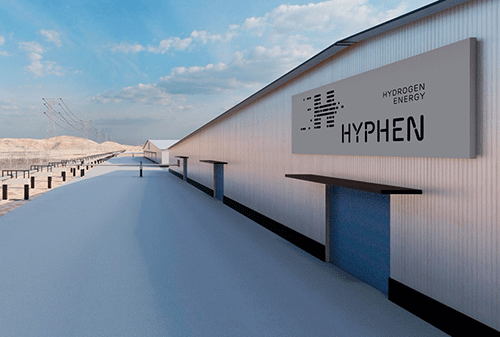Last month during the Africa Energy Indaba in South Africa, Hyphen Hydrogen Energy reportedly signed two agreements with a major chemical company and South Korean hydrogen producer, Approtium, for a total annual offtake of 750 000 million tonnes of green ammonia. Green hydrogen can be blended into existing natural gas pipelines, and also used to produce green ammonia, the main constituent of fertilizer production.
In addition, Namibia is expected to sign the implementation agreement for its US$10 billion (over N$183 billion) green hydrogen project during the second quarter of 2023. This, according to a senior official at the Africa Energy Indaba 2023, will be followed by feasibility studies.
At full development, Hyphen Hydrogen Energy’s project is expected to produce 300 000 metric tonnes of green hydrogen annually from 5 to 6 gigawatts (GW) of renewables and 3GW electrolyser capacity.
Frans Kalenga, a senior manager of sustainable energies at Namcor, told the Zawya Project online publication that six green hydrogen projects are underway in Namibia.
Providing an update on each one of them, Kalenga said: “The HDF (Hydrogene de France) Energy project is at an advanced stage and is looking to get an offtake power purchase agreement and a generation license.”
HDF is building an 85-megawatt (MW) solar power plant and a green hydrogen production unit in Swakopmund and has secured finance from the European Investment Bank at COP27.
In August 2022, Zawya Projects reported that four German-funded pilots worth €30 million (more than N$582 million) for hydrogen dual fuel locomotives, refuelling stations, and agriculture and port applications are underway in Namibia.
Kalenga said the port decarbonisation project is going through the pre-contractual agreement phase.
“We are yet to conclude the negotiations and start with the pre-contractual process for the hydrogen dual-fuel locomotive pilot,” he disclosed.
He continued: “The Cleanergy hydrogen refuelling station pilot is breaking ground this month, but the environmental impact assessment is still pending. The 1.5 GW green hydrogen project in Daures constituency is testing the viability of hydrogen being converted to ammonia to be used domestically.”
He added Namibia is swiftly moving towards establishing an implementation office to provide a conducive environment for investors. “We are looking forward to the hyphen project because that is a key to unlocking our other land parcels.”
Kalenga continued that stakeholder engagements to frame a Synthetic Fuels Act have already commenced, and the details are expected to be finalised by the second quarter of this year.
“The Act will spell out details regarding incentives, corporate tax, royalty, and competitive advantages with other jurisdictions, etc.”
Carlo McLeod, Deputy Director, Compliance, Regulations and Economics, Ministry of Mines and Energy, said Namibia’s local content policy draft is ready.
“We don’t want to depend on taxes and royalties but gain more value from backwards, forwards, and sideways integration. The policy will spell out obligations that companies must meet regarding investments, value creation, skill creation, and knowledge transfer,” he explained.
Benedict Libanda, CEO of Environmental Investment Fund said 30% of the procurement would be reserved for local industries.
Kandali Iyambo, a modified single buyer executive at NamPower, said Namibia is working on substituting power imports with local generation.
“We import about 180 MW from Zambia, 80 MW from Zimbabwe, and 100 MW from South Africa. Our import level varies from 50, 60, and sometimes up to 70% depending on the output from the Ruacana hydropower plant.” “We have 214 MW of wind and solar power projects in the pipeline that are anticipated to be commissioned by 2025-2026. We’re looking at a number of projects powered with heavy fuel oil (HFO) or gas for baseload electricity supply to be developed with IPPs and some by the State.”
Pinehas Mutota, acting CEO of the Electricity Control Board, explained Namibia reformed the electricity market to allow private sector participants like mines and large power users to buy directly from IPPs and permitted exports.
“We have issued export licenses for 125 MW which has now increased to about 300,” he said. “We’ve introduced the modified single buyer market rules in terms of how the trading will take place…. because there is bilateral trading, wheeling framework and also a balancing framework.”
– Additional reporting by Zawya Project


